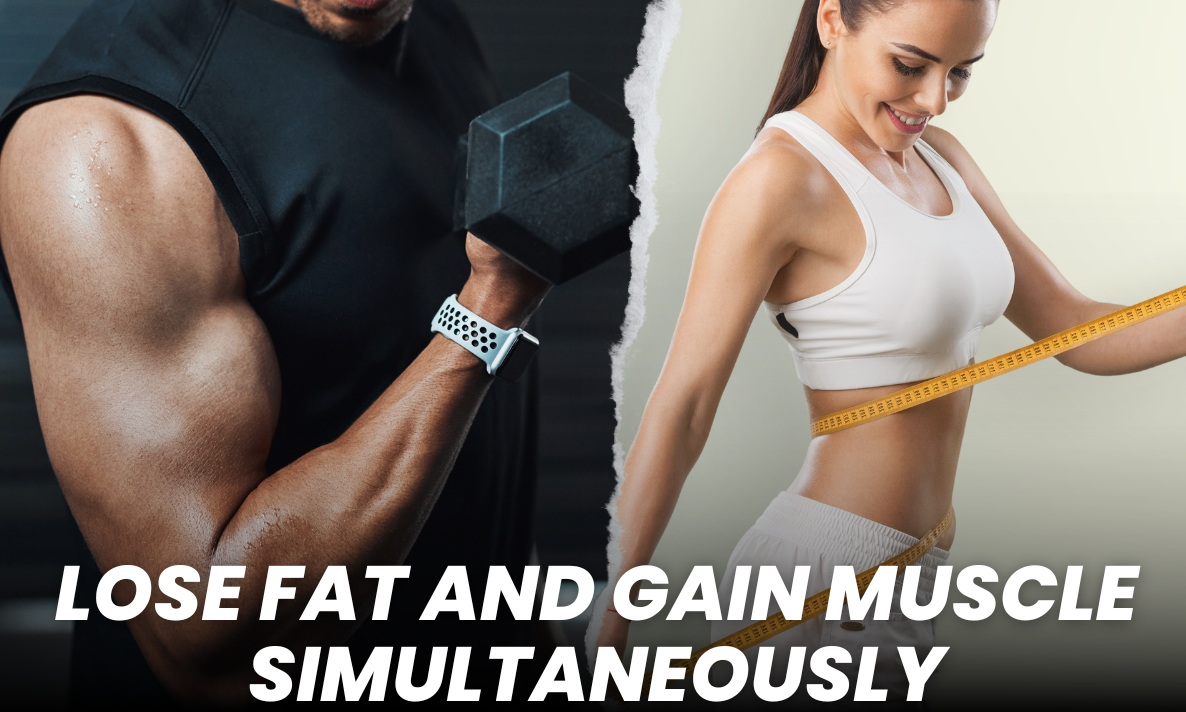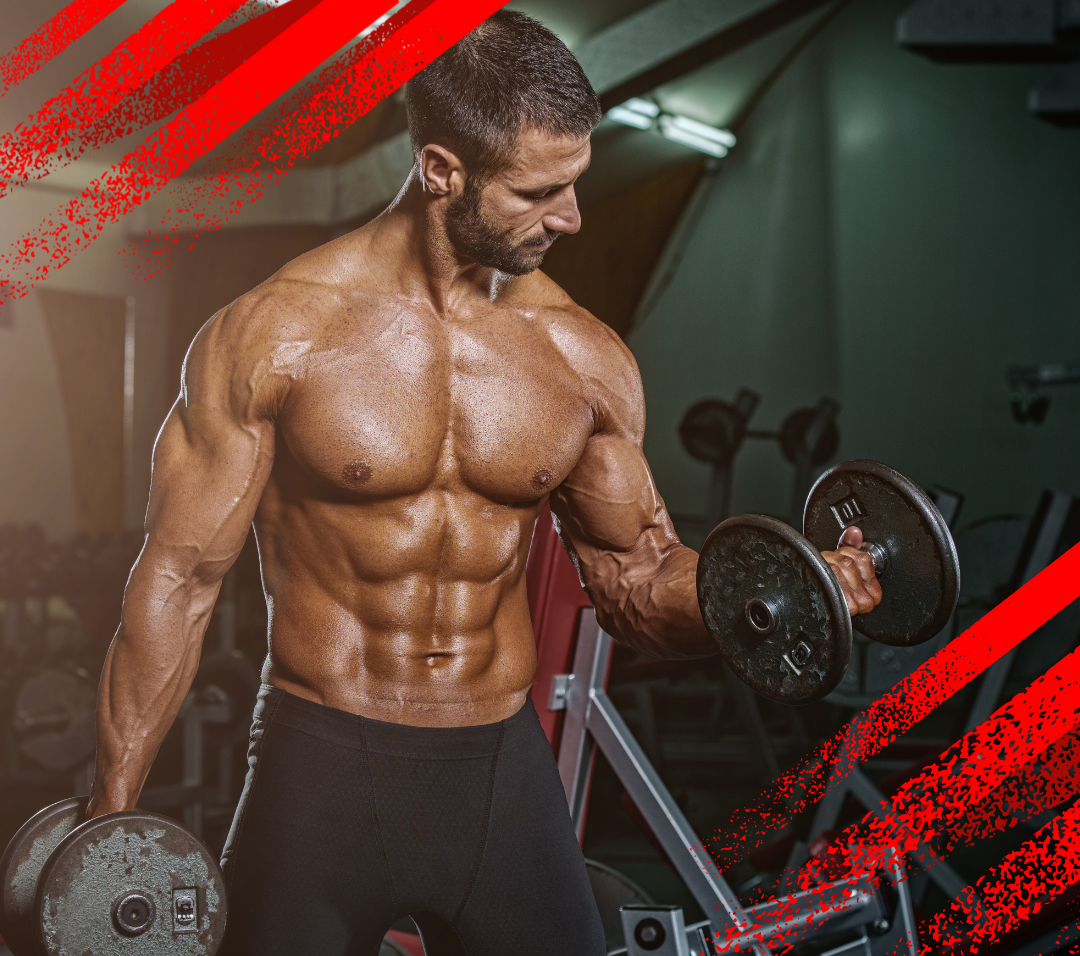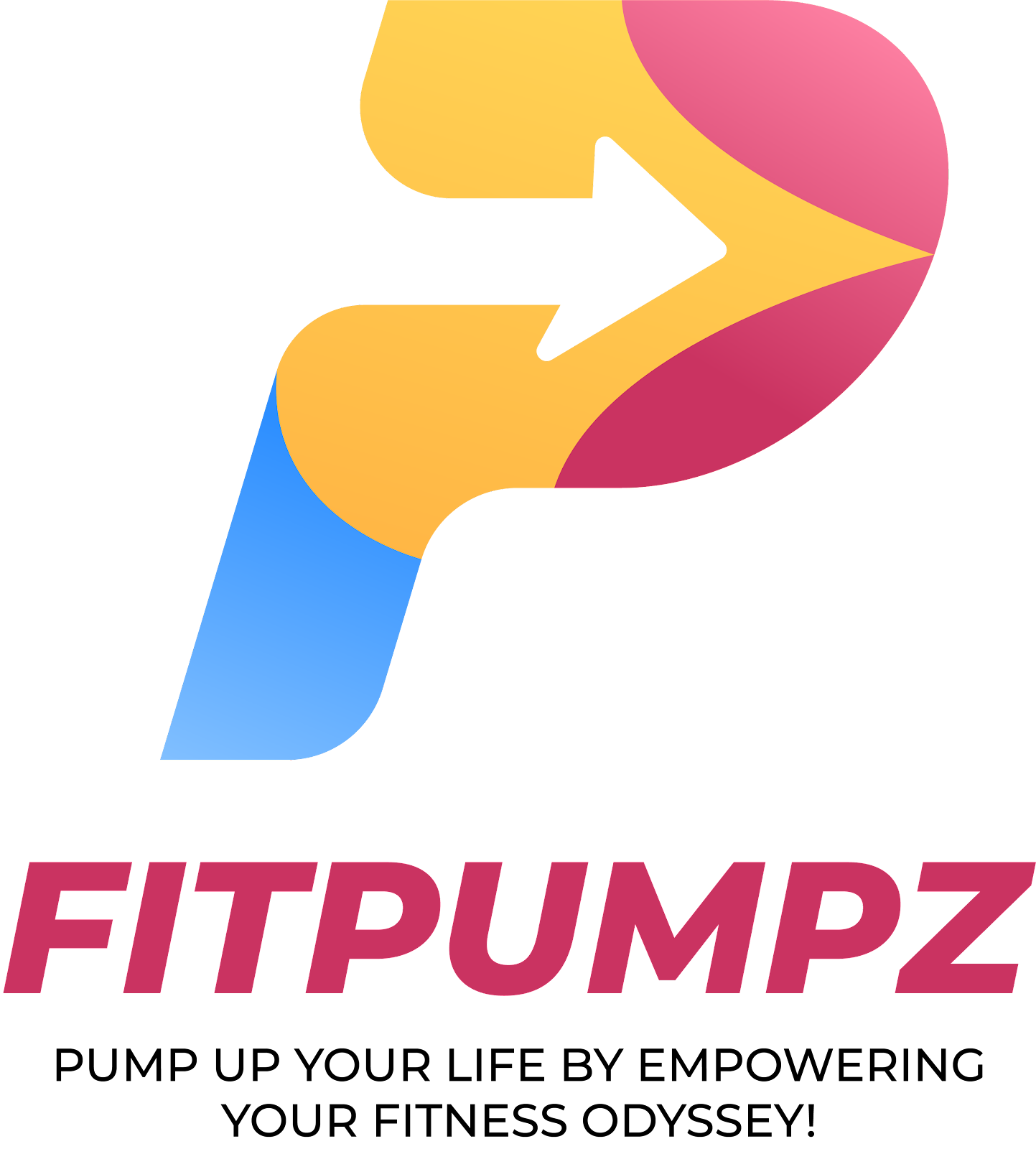It is an exciting undertaking to go on a fitness journey that simultaneously focuses on decreasing fat and growing muscle. This quest involves a smart balance of nutrition and workouts in order to be successful. Understanding the synergy that exists between a well-planned diet and efficient exercise routines is necessary in order to accomplish these two goals simultaneously. In this book, we will delve into the complexities of nutrition and workouts that are specifically designed to assist both the reduction of fat and the growth of muscle. Our insights are intended to provide you with concrete tactics and practical tips for a successful and long-lasting transformation, regardless of whether you are an experienced fitness enthusiast looking for a complete approach or a beginner eager to sculpt a lean and muscular physique. Prepare to navigate the world of diet and workouts with us as we delve into the keys to reaching the elusive balance of losing fat while shaping a strong and muscular body. We will be discussing the keys to obtaining this balance. Gaining muscle weight involves a combination of targeted exercise, proper nutrition adequate rest and consistency. Here’s a comprehensive guide to help you in your muscle-building journey.
Set Clear Goals for Lose Fat and Gain Muscle:
Define your specific muscle-building and fat lose goals. Whether it’s gaining overall mass, targeting specific muscle groups, or improving strength, clear goals will guide your training and nutrition. My specific muscle-building goal is to increase overall muscle mass and improve strength. I want to focus on building muscle in my back, chest, shoulders, and legs to create a more balanced and strong physique.
Additionally, I aim to reduce body fat and improve muscle definition, especially in my abdomen and arms. I also want to increase my overall strength and endurance to support my athletic performance and overall well-being. With these goals in mind, I will focus on a combination of strength training, high-intensity interval training, and a balanced diet to achieve the results I am aiming for.
Training Strategies for Build Muscle and Burn Fat:
Progressive Overload:
Gradually increases the weight or intensity of your workouts to challenge your muscles and promote growth. Progressive overload is an essential principle in resistance training that involves gradually increasing the weight, reps, or intensity of your workout to continue challenging your muscles. This approach helps stimulate muscle growth and strength gains over time. By progressively overloading your muscles, you force them to adapt and become stronger to meet the increasing demands placed upon them. This can be achieved by adding more weight to your lifts, increasing the number of reps or sets, or varying the intensity or resistance of your exercises. Gradually increasing the load and intensity of your workouts over time is crucial for continued progress and improvement in strength and muscular development.
Compound Exercise for Lose Fat and Build Muscle:
Focus on movements that engage multiple muscle groups, like squats, deadlifts, bench presses, and pull-ups. Compound exercises like squats, deadlifts, bench presses, and pull-ups are highly effective at engaging multiple muscle groups simultaneously. These movements require coordination and strength from various muscle groups, making them efficient and effective for building overall strength and muscle mass.
Squats, for example, primarily target the quadriceps, hamstrings, and glutes, but they also engage the core, back, and stabilizing muscles.
Deadlifts work the entire posterior chain, including the lower back, glutes, hamstrings, and calves, as well as the forearms and grip muscles.
Bench Presses mainly target the chest, shoulders, and triceps, but they also engage the back, core, and stabilizing muscles.
Pull-Ups are one of the best upper body exercises, targeting the back, biceps, and forearms, while also engaging the shoulders, chest, and core for stability.
Incorporating compound exercises into your workout routine can provide a comprehensive and efficient way to strengthen and tone multiple muscle groups at once. These movements also have functional carryover to everyday activities and sports, making them valuable additions to any strength training program.
Varied Rep Ranges:
Include a mix of rep ranges in your workouts. This ensures both strength and hypertrophy adaptations. Low reps (4-6) for strength, moderate reps (8–12) for hypertrophy, and higher reps (12–15+) for endurance. Here's an example of a workout that includes a mix of rep ranges:
1. Squats: 3 sets of 4-6 reps for strength
2. Bench Press: 3 sets of 8-12 reps for hypertrophy
3. Pull-Ups: 3 sets of as many reps as possible for endurance
4. Deadlifts: 3 sets of 4-6 reps for strength
5. Bicep Curls: 3 sets of 8-12 reps for hypertrophy
6. Triceps Dips: 3 sets of as many reps as possible for endurance
By incorporating a mix of rep ranges in your workouts, you can target different muscle fibers and training adaptations, leading to overall improved muscle strength, size, and endurance.
Volume and Frequency:
Incorporate an appropriate volume of training (sets x reps x weight) to stimulate growth of muscles. Train each muscle group 2-3 times per week with sufficient rest between sessions. In order to stimulate growth of muscles, it is important to incorporate an appropriate volume of training, which can be calculated by the number of sets, reps, and weight used during each exercise. This can be achieved by following a principle known as the "volume load", which measures the total amount of weight lifted in a given workout. To promote muscle hypertrophy, it is recommended to train each muscle group 2-3 times per week, with sufficient rest between sessions to allow for recovery and growth. Focusing on compound movements such as squats, deadlifts, and bench presses can help to target multiple muscle groups at once, optimizing training efficiency. It is also important to progressively increase the volume and intensity of workouts over time to continue stimulating growth of muscles. By implementing these strategies, individuals can create a structured and effective training program to achieve their muscle-building goals.
Isolation Exercise for Skin Fat Loss:
Target specific muscles with exercise like bicep curls, triceps extensions, etc. When it comes to strength training, it's important to target specific muscle groups to achieve the desired results. By focusing on exercises such as bicep curls and triceps extensions, you can isolate and work those individual muscles, leading to increased strength and muscle definition. Bicep curls, for example, primarily target the biceps brachii, the muscles on the front of the upper arm, while triceps extensions focus on the triceps brachii muscles at the back of the upper arm. By incorporating these exercises into your workout routine, you can effectively build and tone these specific muscles for a more balanced and sculpted physique. Additionally, targeting specific muscles can also help to correct muscle imbalances and prevent injuries by strengthening weaker areas. By including exercises that isolate and target specific muscles, you can work towards a more comprehensive and effective strength training program.
HIIT Workout Rapid Body Fat Loss:
High-intensity interval training burns fat and maintains muscle. It alternates between very intense bursts of exercise and low-intensity exercise or rest. High-intensity interval training (HIIT) has been proven to be an effective method for burning fat while maintaining muscle mass. This type of training involves short bursts of intense exercise, followed by periods of lower intensity or rest.
During the intense bursts of exercise, the body utilizes stored carbohydrates for energy, and during the lower intensity periods, the body switches to burning fat for energy. This allows for a more efficient fat-burning workout, while also helping to preserve muscle.
Additionally, HIIT has been shown to increase the body's metabolism, allowing for continued fat burning even after the workout is finished. This can lead to greater overall fat loss and improved body composition.
Furthermore, HIIT workouts are time-efficient and can be easily modified to suit individual fitness levels, making it a popular choice for those looking to fat burn and maintain muscle mass. However, it's important to note that HIIT can be very intense, so it's crucial to start slowly and gradually increase the intensity and duration of the workouts to avoid overtraining and injury.
Cardiovascular Exercise:
While the primary focus is on resistance training, incorporating some cardiovascular exercise can aid overall health and fitness. Cardiovascular exercise, such as running, cycling, or swimming, can improve heart health, increase lung capacity, and help with weight management. It also helps to improve endurance and stamina, which can be beneficial for resistance training workouts. Additionally, cardiovascular exercise can help to reduce stress and improve mood, contributing to overall mental well-being.
Incorporating some form of cardiovascular exercise into a resistance training routine can help to create a well-rounded fitness regimen that benefits the body in multiple ways. This can be done by adding a few days of cardio workouts to the weekly schedule, or by including some high-intensity intervals or circuit training within the resistance training sessions.
Ultimately, finding a balance between resistance training and cardiovascular exercise can help to improve overall fitness, promote a healthy body composition, and support long-term health and well-being.
Mind Muscle Connection Effective Muscle Gain:
Connection on the muscle you’re working on during exercise for better engagement and growth. One of the key factors in achieving optimal growth of muscles and development is the ability to focus and concentrate on the muscle being worked during exercise. By directing your mental focus and attention to the specific muscle group being targeted, you can ensure better engagement and activation of that muscle, leading to more effective and efficient workouts.
When you focus on the muscle being worked, you can better control the movement and avoid relying on momentum or secondary muscle groups to complete the exercise. This targeted concentration helps to maximize the recruitment of muscle fibers, leading to more effective muscle stimulation and growth.
Additionally, concentrating on the muscle being trained can also help to improve mind-muscle connection, which is essential for achieving optimal results in any exercise program. By developing a strong mind-muscle connection, you can learn to better feel and control the targeted muscle, leading to more effective and efficient workouts.
To enhance your focus and concentration during exercise, it can be helpful to visualize the muscle working and contracting with each repetition. You can also use techniques such as controlled breathing and mental cues to help maintain your focus on the muscle being worked.
Overall, by consistently practicing and improving your ability to concentrate on the muscle being trained, you can experience better muscle engagement, growth, and overall progress in your fitness journey.
Nutrition Blueprint for Lose Fat and Gain Muscle at The Same Time:
Caloric Surplus for Fat Loss Fast:
Consume more calories than your body burns to support muscle growth. Use online calculators to estimate your daily caloric needs. In order to support growth of muscles, it is important to consume more calories than your body burns. Online calculators can be a helpful tool in estimating your daily caloric needs. By inputting information such as age, weight, height, and activity level, these calculators can provide an estimate of how many calories you need to maintain your current weight. To support growth of muscles, you will likely need to consume even more calories than this estimated amount. This surplus of calories provides the extra energy needed for muscle repair and growth after workouts. It is important to focus on consuming nutrient-dense foods such as lean proteins, complex carbohydrates, and healthy fats to ensure that the extra calories are coming from quality sources. Keep in mind that individual needs can vary, so it may take some trial and error to find the right caloric intake to support your growth of muscles goals.
Protein Intake for Muscle Gain:
Aim for around 1.6-2.2 grams of protein per kilogram of body weight, especially if you are engaging in regular strength training or endurance exercise. This will help support muscle recovery and growth. Good sources of protein include lean meats, poultry, fish, eggs, dairy products, and plant-based sources such as beans, lentils, and tofu. Be sure to spread your protein intake throughout the day and include it in each meal to optimize muscle protein synthesis. Remember to also stay hydrated and eat a balanced diet to support your overall muscle health. Always consult with a healthcare professional or registered dietitian to determine the right amount of protein for your individual needs.
Carbohydrates for Energy:
Provide energy for workouts and help replenish muscle glycogen stores. When it comes to providing energy for workouts and replenishing muscle glycogen stores, complex carbohydrates are an essential part of any athlete's diet. Foods such as whole grains, fruits, and vegetables are excellent sources of complex carbs that can fuel intense physical activity. Whole grains like brown rice, oats, and quinoa provide sustained energy due to their high fiber content, while fruits and vegetables offer vitamins, minerals, and antioxidants that support overall health and muscle recovery. These complex carbs break down slowly in the body, providing a steady release of energy to fuel workouts and replenish glycogen stores in muscles. By incorporating a variety of complex carbs into their diet, athletes can optimize their performance and support their overall health. Whether it's a bowl of oatmeal before a morning workout or a hearty salad for lunch, complex carbs play a crucial role in keeping athletes energized and ready to tackle any physical challenge.
Healthy Fats for Boost Fat Loss:
Essential for hormone production and overall health. Essential fatty acids are crucial for hormone production and overall health. Sources such as nuts, avocados, and olive oil provide the body with the necessary omega-3 and omega-6 fatty acids that are vital for hormone synthesis and balance. These healthy fats also play a role in supporting cardiovascular health, brain function, and inflammation regulation. Nuts, such as almonds and walnuts, are rich in omega-3 fatty acids, while avocados and olive oil are excellent sources of heart-healthy monounsaturated fats. Including these foods in your diet can help maintain hormonal harmony and support overall well-being. Additionally, essential fatty acids are necessary for the absorption of fat-soluble vitamins A, D, E, and K, further underscoring their importance for overall health. By incorporating these sources of essential fatty acids into your diet, you can take an important step toward supporting hormone production and promoting a healthy lifestyle.
Hydration Maintain Healthy System:
Drinking plenty of water is essential for aiding muscle recovery and maintaining overall health. When you exercise, your muscles become dehydrated, making it harder for them to recover properly. By staying hydrated, you can improve circulation, regulate body temperature, and flush out toxins, all of which are important for muscle recovery. Additionally, adequate water intake can help prevent cramps and muscle fatigue during workouts. Beyond muscle recovery, staying properly hydrated also supports overall health, helps with digestion, and boosts energy levels. Aim to drink at least 8-10 glasses of water a day to ensure your body is functioning at its best.
Supplements for Build Muscle Fast:
It's possible that this is a convenient approach to achieve your daily protein requirements. Only in situations when you typically do not consume enough protein in your everyday routine will this be beneficial. Creatine can assist you in recovering from high-intensity exercises and in doing those activities. The Branched-Chain Amino Acids, often known as BCAAs, have the ability to alleviate muscular discomfort and encourage the growth of muscles to their full potential.
Rest and Recovery for Proper Muscle Growth:
Because it is essential for the growth and repair of muscle tissue, you should strive to get 7 to 9 hours of excellent sleep everyday. Muscles require time in order to recuperate. One to two days of rest should be allowed every week, or rotate between different muscle groups on consecutive days.
Monitoring and Adjusting Body Recomposition Work:
Assess your development on a regular basis by taking measurements, taking photographs, and observing your strength increases.Make adjustments to your diet and workout routine in accordance with the comments and suggestions made by your body.If you want individualized counsel, you might want to think about talking with a nutritionist or a fitness specialist.
Consistency and Patience for Ultimate Result:
Maintaining a consistent training regimen is the best way to notice incremental development in your fitness level. Putting on muscle requires a significant amount of time and commitment. Getting results won't happen immediately, but if you put in the effort, you will certainly make progress.
Remember, Starting out on a journey toward holistic fitness requires striking a delicate balance between a number of different aspects in order to accomplish the elusive goal of simultaneously reducing body fat and increasing muscle. A strategic and all-encompassing approach to nutrition and exercise is required in order to successfully complete this dynamic process, which is commonly referred to as body recomposition. Individuals need to concentrate on their body composition in order to effectively lose fat and grow muscle at the same time. They should strive to reduce their percentage of body fat while simultaneously increasing their muscle mass. To accomplish this, one must make a concerted effort to fat burn by following a diet that is properly calibrated and takes into account the total number of calories consumed and burned. It is equally important to participate in workouts that stimulate growth of muscles in order to make progress in this multifaceted journey. The reduction of body fat and the concurrent increase in muscle tissue are the two outcomes that contribute to the synergy that exists between fat loss and muscle gain. It is not enough to simply reduce the amount of weight that one carries; rather, it is necessary to conduct a transformation that includes both weight loss and weight gain. It is possible for individuals to navigate this complex process in order to sculpt a physique that reflects the harmonious integration of strength and leanness. This can be accomplished by paying attention to the keywords such as body fat, growth of muscles, calorie management, and body composition.
FAQ's
Can diet and workouts help me lose fat and increase muscle?
Absolutely! Weight loss and muscle building may be maximized with balanced eating and targeted activities. A strategy approach that incorporates calorie management, macronutrient optimization, and strength training can boost muscle growth and burn fat.
How does diet affect fat loss and muscle gain?
Nutrition is essential. A balanced diet that supports fat reduction and muscle building requires attention to calorie consumption, protein intake, and nutrient-dense meals. This complete diet boosts muscle protein synthesis, exercise energy, and fat reduction.
Which routines maximize fat reduction and muscle gain?
Resistance and cardiovascular training must be combined. Strength training builds muscle, while cardio burns calories and loses fat. A well-rounded workout with complex exercises and high-intensity intervals can help people shed weight and increase muscle.
Can muscular mass be preserved while decreasing fat?
Certainly. Maintaining lean body mass is crucial to fat reduction and muscle building. Even with a calorie deficit, resistance exercise and protein consumption help preserve muscle. This method assures fat loss over muscle loss.
How does body composition change affect health throughout this process?
Maximizing fat reduction and muscle building improves health and beauty. Balanced body composition improves metabolic health, strength, and chronic disease risk. This comprehensive workout technique improves both looks and health.
Conclusion
In the quest for a transformative body composition, the journey to burn fat and gain muscle simultaneously unfolds as a fascinating fusion of science and dedication. Shattering conventional norms, this exploration ventures into uncharted territories where the boundaries between losing body fat and building muscle blur. The marvel of muscle building while burning fat challenges preconceived notions, illustrating the intricacies of stimulating muscle cells and promoting muscle growth while orchestrating the breakdown of stored fat. The concept of body recomposition becomes a beacon, guiding those who dare to envision a scenario where one can lose fat and add muscle, preserving lean body mass and defying the notion of muscle loss during this transformative journey. This innovative pursuit dismantles the traditional dichotomy of fat and muscle, introducing the revolutionary idea that muscle is denser than fat, prompting a shift in the ratio of fat to muscle. It becomes evident that the endeavor to gain muscle mass while shedding body fat is not just possible but an exhilarating challenge that sparks a metamorphosis in both body and mind. As we delve into the unexplored realms of losing body fat and grow muscle, the synthesis of burning fat and building muscle concurrently emerges as an achievable feat, propelled by the notion that a successful body recomposition is within reach. Embracing the unconventional wisdom that challenges the status quo, we redefine the very essence of transforming our bodies, showing that it's not merely about losing weight but sculpting a physique that embodies the harmonious dance of strength and leanness. So, let us venture beyond the familiar, break free from the conventional, and embrace the limitless possibilities that come with the pursuit of burning fat and grow muscle simultaneously.








